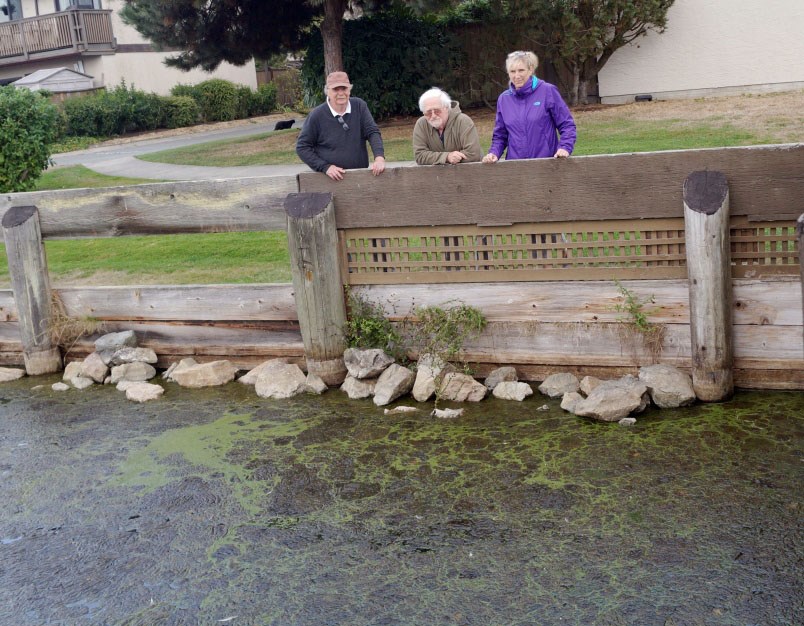The City of Richmond is proposing to use herbicides along a half-kilometre stretch of the West Dyke Trail to eradicate invasive Brazilian elodea that could have catastrophic effects on Sturgeon Bank marsh if it were to jump the walking path.
The city’s environment manager Chad Paulin has told council it is working with the B.C. Ministry of Forests, Lands and Natural Resource Operations on a Pesticide Use Permit (PUP), which will require public consultation by this summer.
“If successful, the permit will allow for the application of an aquatic herbicide (as needed) in the water feature to manage the infestation” within the water feature of the Mariner’s Village townhouse complex.
The city has tried other means to slow the plant, which is believed to have spread after a person dumped a tropical aquarium into the pond. This winter, staff drained a 210 metre portion of the linear waterway and exposed the plants to freezing temperatures. The effects will now be monitored during the growing season.
In 2016, at a cost of $29,000, the Ministry tried unsuccessfully to remove the plants in a 12-metre section of the 500-metre long canal.
The city has received $222,500 from the province to handle the Brazilian elodea infestation — one of only two known to exist in the province. Such problems are managed by a program called the Early Detection Rapid Response. The city maintains its Invasive Species Action Plan.
The problem is thought to have commenced in 2014. The following year the city determined Mariner’s Village strata was using free-flowing, treated water without a water meter. When the taps were turned off due to costs, the elodea spread fast, as the stringy perennial prefers slow-moving freshwater bodies.
The strata has offered to install circulating pumps and a water valve to maintain appropriate levels without wasting water.
The Ministry said previously that hand removal is cost prohibitive and herbicide options are limited, as the Department of Fisheries and Oceans is overseeing removal proposals because the Bank is tidal waters, which are home for baby salmon and numerous other species that depend on healthy, native plants.



